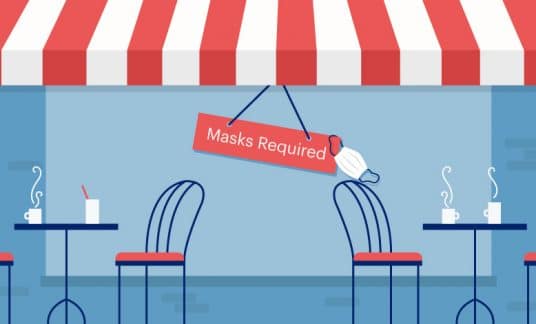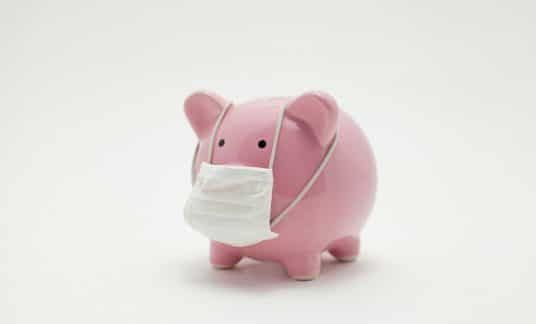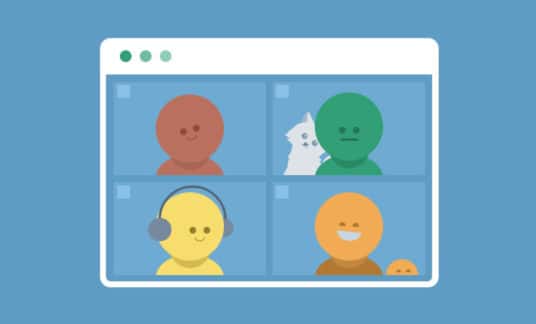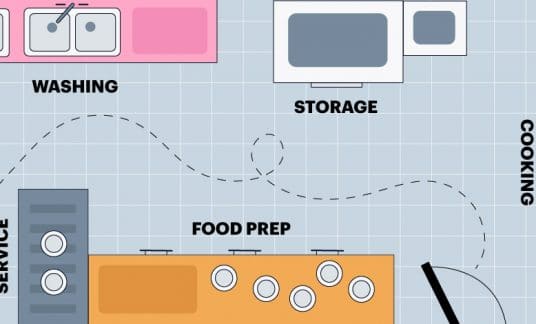Your restaurant menu prices affect your bottom line. Using a consistent menu pricing formula and staying aware of your costs improves profitability.
Take the following steps to update and optimize your menu.
What Is Menu Pricing?
Menu pricing refers to the prices customers pay for each menu item. For profitability, restaurateurs must price dishes to cover the cost of buying ingredients, preparing and serving the meal.
Business owners set restaurant menu prices according to several factors, including:
- Raw food costs per plate
- Overhead and labor expenses
- Competitive position
- Desired menu item profit margin
- Strategic or psychological elements
Restaurant Menu Pricing and Your Bottom Line
Your restaurant relies on food and beverage sales to pay the bills. Therefore, a portion of every item sold goes to your expenses.
So, how much profit should you make in a restaurant?
According to a report by RestaurantOwner.com, “food cost as a percentage of food sales is generally in the 28% to 32% range,” and “total payroll cost should not exceed 30% to 35% of total sales for full-service operations and 25% to 30% of sales for limited-service restaurants.”
Based on these percentages, for every dollar sold, up to 67 cents goes to food and labor. The rest covers your overhead and (hopefully) returns a profit.
However, rising food and labor costs can eat into your earnings. Additionally, some menu items are more profitable than others.
By optimizing menu prices and menu item placement, owners can maximize their return and benefit from higher profit margins.
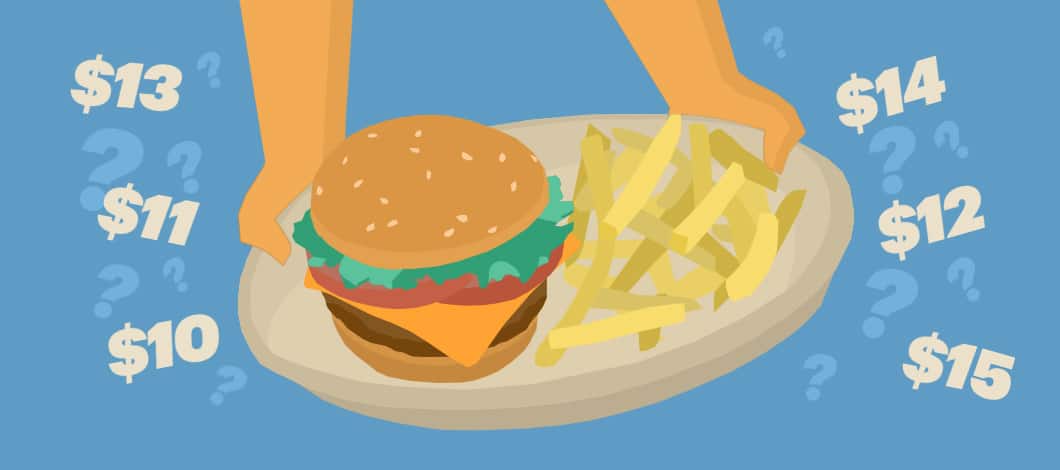
How to Price a Menu in 3 Steps
The easiest way to price a menu is to use a menu pricing calculator and recipe costing tools.
Many point-of-sale (POS) systems offer these features. But, you can compute the figures using a calculator, your inventory price list and your profit-and-loss statement. (There are software services available, too.)
If you’re starting from scratch, follow these steps to calculate the cost of each menu item.
1. Calculate Your Per-Plate and Per-Item Raw Food Cost
Raw food cost reflects the amount paid for meal ingredients. It accounts for every item on the plate and menu, including garnishes, sauces and side dishes.
For instance, you may sell a quarter-pound cheeseburger and fries garnished with a pickle slice, tomato and lettuce.
Your raw food cost includes the burger, bun, cheese, fries and garnish. If you hand-form your patties and season them with onions and spices, these portions and their corresponding price tag need to be figured in as well.
From a dish of coleslaw to a side of cheese sauce, every item sold must be measured and the price of all ingredients fully accounted for.
2. Figure Menu Prices Using a Menu Pricing Formula
Once you know your raw food costs or price per serving, determine your ideal food cost percentage. As noted by RestaurantOwner.com, the general range is 28% to 32%.
From the example above, your raw food costs for a cheeseburger and fries are $4, and you’re aiming to spend no more than 30% of your sale on inventory.
Here’s the menu pricing formula:
- Raw food cost ($4) / Ideal Food Cost Percentage (30%) = Menu Price ($13.33)
Although this seems like a hefty markup, the ideal food cost formula doesn’t account for labor or overhead expenses.
Food cost formula menu pricing helps you set a base price, but it’s important to consider other factors as you work through individual prices.
3. Assess Your Menu as a Whole
Menu items have different profit margins. Beverages typically have higher profit margins, whereas pricey cuts of meat or seafood dishes are lower.
Therefore, it’s vital to look at individual menu prices along with your food and beverage sales as a whole.
Before calculating menu prices, consider:
- How do your restaurant’s menu prices compare to the competition?
- Are there special factors that may warrant higher or lower prices?
- How do guests perceive prices (i.e., $13.33 versus $13.25)?
- Do you expect the item to be popular?
Established Restaurants: How to Update Menu Pricing
If you didn’t initially use the above method to price your menu or are facing steep labor or inventory cost increases, use these tips to update your menu prices.
Compute the Food Cost Percentage
Figure out what percentage of last year’s sales (or first-quarter sales) went to food costs. Use sales and inventory data and the following restaurant food pricing formula:
- (Beginning Inventory + Inventory Purchases – Ending Inventory) / Food Sales = Food Cost Percentage
If your food cost percentage falls outside of the upper range of 32%, go through individual items to find potential ways to decrease food costs or increase profit margins.
Calculate the Gross Profit Margin of Your Menu
Next, determine the profitability of various menu items. Grab your menu and your per-plate raw food cost and use this formula:
- (Menu Price – Raw Food Cost) / Menu Price = Gross Profit Margin
If you priced your burger at $10 last year, paid $4 for raw food costs, your gross profit margin is $0.60 on the dollar or 60%.
Every burger sold provides $6 to pay for labor, operating expenses and owner profit. Let’s look at how that $6 of gross profit margin may break down:
- $1: Rent or Mortgage, taxes and insurance (10% of sales)
- $3: Management and hourly payroll and benefits (30% of sales)
- 50 cents: Utilities, phone and internet services (5% of sales)
- 50 cents: Marketing and advertising (5% of sales)
Of course, your expenses may be lower or higher, or you may have extra costs, such as equipment loan payments.
In short, $6 in gross profit per burger sold may not be enough to stay profitable, especially if labor or food costs rise.
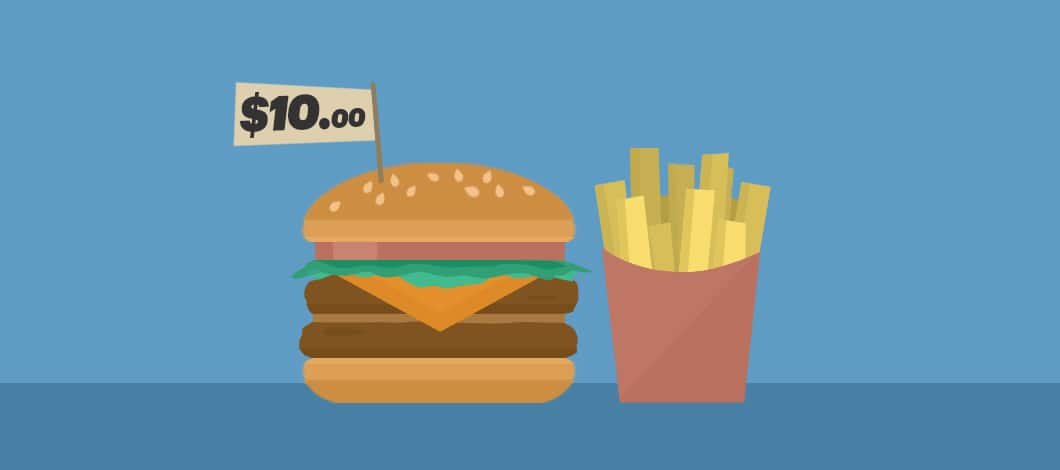
Tips for Increasing Profitability
Deciding on the best prices for your menu is one step toward profitability. But, there are many variables that affect your food costs.
Focus on what you can control and actively work to maintain or lower costs when possible.
Check Your Prime Costs Weekly
Your costs of goods sold (COGS) and labor, also known as prime costs, make up the largest chunk of your budget.
With staffing challenges and rising expenses, prime costs should be at the top of your mind and calculated weekly.
According to RestaurantOwner.Com, in general, prime costs for table-service restaurants should be “65% or less” of total sales, and limited-service establishments should aim for “60% or less.”
Use this formula to calculate your prime cost:
- Cost of Food and Beverage Inventory + All Payroll Costs = Prime Cost
Control Food Portions
Correct menu item costing depends on exact portioning.
If your staff is putting an extra slice of cheese on every burger or adding 2 ounces of shredded cheese to a salad instead of 1, your inventory costs will rise, and gross profits will decrease.
In most cases, restaurants benefit from following the example of franchises: pre-portion everything using a scale and containers.
For instance, if a server taps the “add shredded cheese” button on the POS system, your back-of-house staff shouldn’t grab a handful of cheese for the salad.
Instead, use a 1- or 2-ounce portion cup to scoop the right amount.
Additionally, managers should perform spot checks to ensure plated meals and recipes are consistent in appearance and ingredient amounts.
Train Restaurant Staff
A well-trained restaurant crew helps keep your costs in line and can even increase your profits when upselling high-value items.
Servers, order takers and to-go teams should be able to answer the following questions:
- How many crackers come with a cup of soup versus a bowl?
- Does a side of sour cream cost extra?
- Can you sub a baked potato for french fries? Is there an additional charge?
- What are popular upsell items and opportunities?
In addition, encourage front-of-house staff to promote add-on items or suggest specialty drinks or desserts with higher profit margins.
Use Food Costing Software
Raw food costs fluctuate, and recipes change. Although it’s possible to figure this information out manually, more extensive menus and complex recipes are difficult to track on paper.
Food costing software or POS features provide real-time data about your expenses and can send alerts when certain menu items decrease in profitability.
Furthermore, you can use a menu pricing calculator to adjust portions and ingredients to see how the raw costs and menu pricing changes.
Review Competition and Demand
Restaurant owners may increase menu prices to reflect In-demand food items or unique experiences.
For example, sports fans may pay more for a burger when watching live sports on television and knowing where they stand in their fantasy football league.
Others will pay extra for the live music and ambiance.
However, you may want to reduce your price strategically. Sometimes the difference of a few pennies is enough to sway a guest looking for all-you-can-eat wings to enter your establishment over the pub down the road.
Monitor Inventory Costs and Usage
Selling 27 burgers in a day doesn’t mean you went through 27 buns. Restaurant owners should estimate inventory usage based on sales while reviewing losses to food waste or errors.
Restaurant inventory management tips include:
- Regularly review vendor price changes
- Organize your food storage areas
- Train staff on the first-in, first-out inventory method
- Use integrated inventory software with your POS system
Engineer Your Menu
Menu engineering assesses sales data and food costs to calculate the right price and best menu position.
Menu items fall into 1 of 4 categories:
- Popular and profitable dishes
- Popular but unprofitable meals
- Profitable but unpopular items
- Unpopular and unprofitable foods
Restaurant owners use data to eliminate menu items, place profitable dishes in prime menu locations or highlight them with a shadow box or bold font.
Track Restaurant Menu Prices
A big part of profitability comes from using a formula for pricing food and accurate calculations. Learning how to price a menu properly is crucial.
It takes some number-crunching, but doing the math pays off when you can pay your bills and have some funds leftover for yourself and your restaurant.



